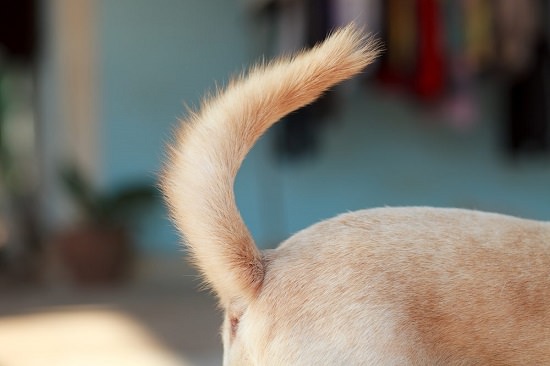Learn all about perianal fistula in dogs and prevent your furry friend from the discomfort of this agitating condition.
Pets hold a special place in our hearts and homes; their health and well-being are important to us. Perianal Fistula in dogs is a serious condition that, if left unchecked, can have devastating consequences for our furry friends. Look at what the condition is and how it can impact the health and well-being of your pet dog.
Perianal Fistula in Dogs
Perianal Fistula, also known as Anal Furunculosis, is a chronic disorder that affects the area immediately surrounding the dog’s anus. It presents as foul-smelling, purulent [pus-producing], and ulcerating tracts or tunnels extending into the affected tissue. It first appears as small oozing holes in the Perianal region, and as the disease progresses, these holes may enlarge to take over the entire anus.
What to watch out for?
Most people do not intend to check regularly under their dog’s tail. There are very few noticeable signs at the earliest stages of the disease, so the condition is often first discovered during routine examination by a Vet or while bathing/grooming the pet.
As the disorder progresses, the dog may start displaying the following signs:
- Chronic pain and irritation can cause the dog to bite excessively or lick at the tail and rectal region.
- Dogs may be reluctant to sit down. Simultaneously the tail-wagging reduces or is accompanied by signs of pain.
- Behavioural changes: the dog might struggle or show aggression when you touch its tail or back. Chronic pain and discomfort can cause depression, agitation, and aloofness in dogs.
- Painful and strained defecation: dogs may cry and whine every time they have to defecate.
- Dogs also may develop anorexia.
- Irregular bowel movements ranging from Diarrhoea to constipation. Stools can even contain blood and mucous.
Promptly consult a veterinarian if you notice any of these signs in your dog.
Causes of Perianal Fistula
There are several theories about the cause of the disease, however, the origin is complex and multifactorial.
Risk Factors
Dogs with broad-based tails present lower between the hipbones and excessive apocrine sweat glands near the anal canal. These are classic features of the German Shepherd breed, which make up more than 80% of the affected cases. Unneutered, middle-aged male dogs are at higher risk.
Blockage or infection of the anal glands and hair follicles by faecal matter might be a cause. And poor air circulation to the area can also lead to the condition. Low thyroid hormone levels and immune system defect can cause susceptibility. Studies also suggest a genetic component to the disease.
Irritable Bowel Disease frequently occurs alongside Perianal fistulae, suggesting a link between the two conditions. Food allergy can also be a probable cause.
Treatment
1. Medical Management
Perianal Fistulae is a progressive disease, so it is crucial to seek timely medical care for your dog. Medical management with immune-modulating drugs is the go-to therapy with a two-stage approach:
1. Induction Phase
Cyclosporine is a choice of immunosuppressant drug to be taken orally to resolve clinical signs.
While improvement happens quickly, the disease recurs in over 80% of cases once treatment is stopped. So, lifelong medical management may be necessary.
The side effects of Cyclosporine include excessive hair growth resulting in notable shedding. Cyclosporine is also expensive, and it may not be affordable for many dog owners. Therefore, you can even try Prednisolone as an alternative, however, its effectiveness is case-dependent.
2. Maintenance Phase
Topical ointment like tacrolimus and some antimicrobials are preferred in the treatment regime to keep clinical signs in remission.
2. Surgical Management
Surgery is advisable only when the immunosuppressive therapy fails to show desirable results. Cryotherapy, laser therapy, or chemical cauterization may destroy the infected tissue. On the other hand, tail removal can prevent a recurrence.
After Surgery
Laxatives are prescribed for pets that express pain while defecating. You can also use a protective cone or collar to prevent the dog from tampering with the surgery site.
3. Novel Protein Diet
Because food allergy may be a probable cause for Perianal Fistula, you can use rare or new protein sources that the dog hasn’t been exposed to before. This may help alleviate the condition.
Alternate protein sources include rabbit, fish, or duck meat. A hypoallergenic diet has the added advantage of treating colon inflammation that often occurs alongside Perianal Fistula.
4. Hygiene therapy
In addition to medical and surgical management, you can clip excess fur and keep your pet’s perianal area clean and dry to improve treatment outcomes.
Precautions
- The presence of a genetic component in Perianal fistulae, suggests that breeding of infected dogs should not be done. A Perianal fistula spreading to other pets is not a concern, as habitually grooming and bathing your dog can avoid any issue.
- Watch out for any changes in your dog’s behaviour, eating habits, and bowel movements.
- Dealing with Perianal fistulae can be a lifelong commitment that requires care and patience from the owner’s side and strict adherence to guidelines and a treatment plan formulated by a qualified medical professional.
- Routine medical checkups and early intervention are also crucial to mitigate long-term health outcomes and improve the quality of your pet’s life.



